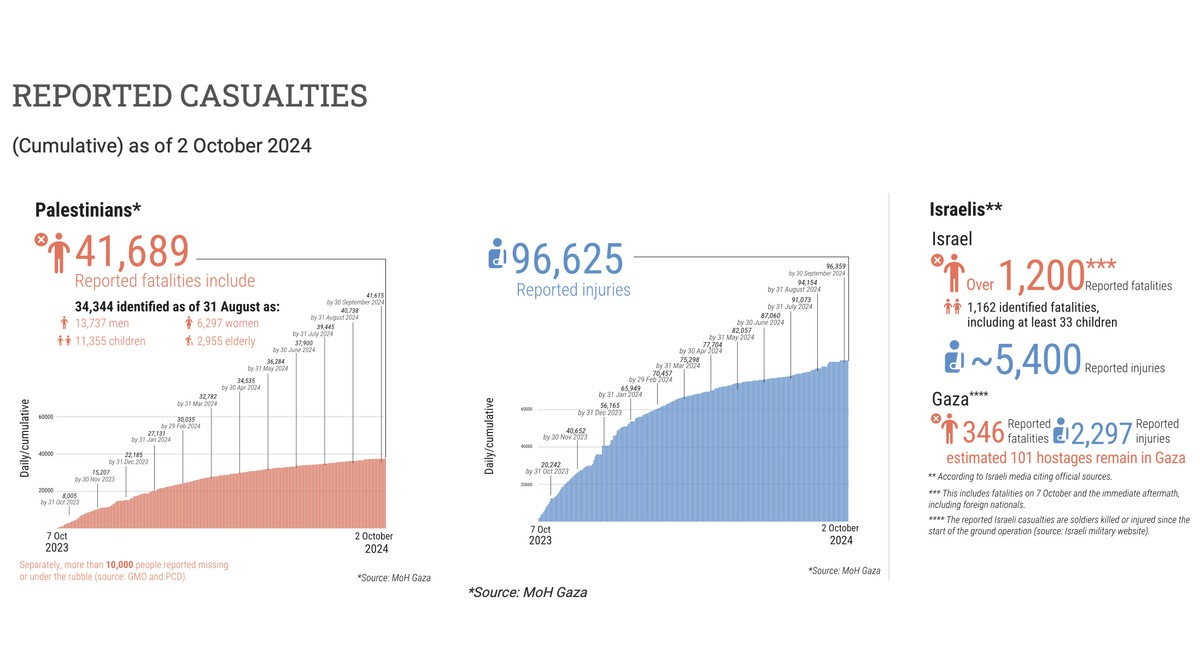Israel —(Map)
Monday marked one year from a brutal attack on Israel by the militant group Hamas. Since then, fighting has grown in the region, with Israel now involved in serious fighting in Gaza and Lebanon. Recently, concern has grown as Iran has joined the conflict.
On October 7, 2023, the militant Palestinian group Hamas, which is based in Gaza, surprised Israel with a large, violent attack. Around 1,200 people were killed, and roughly 250 people were taken prisoner. About 100 people are still missing.
In response, Israel’s military quickly launched airstrikes on the Gaza Strip, flattening buildings. Israel has continued to pound Gaza with bombs, and has sent soldiers all through Gaza. Civilians in Gaza have been forced to move again and again as Israel focuses its war on different parts of Gaza.
Hamas’s attack on Israel shocked people in Israel and around the world. But Israel’s massive response has also shocked people. Over 41,000 people in Gaza have been killed. Most of the buildings in Gaza have been destroyed. Hundreds of thousands of Gaza’s 2.3 million people are now living in rough camps.

(Source: Screenshot, UN OCHA.)
There have been many efforts to reach a ceasefire, but these have failed. Israel says it will only stop when it has destroyed Hamas. But Hamas soldiers are hiding in tunnels and mixing with civilians, making it nearly impossible to remove them all.
The fighting has also spread far beyond Gaza. For much of last year, there was some fighting back and forth across Israel’s border with Lebanon. The fighting was not with the country of Lebanon, but with a militant group in Lebanon called Hezbollah.
Hamas and Hezbollah
Hamas and Hezbollah are both militant groups, and are considered terrorists by many countries. They do not represent the governments of the countries or areas where they are located. In fact, in each of these areas, there are large groups of people who do not support these militant organizations.
Hamas and Hezbollah, along with similar militant groups in other areas, are supported by Iran, which provides them with money, weapons, and information.
On September 17, Israel began to strike back at Hezbollah fighters in Lebanon.
😕
This image has not been loaded because of your cookie choices. To view the content, you can accept 'Non-necessary' cookies.
Israel began a series of airstrikes across Lebanon, targeting Hezbollah leaders and fighters. Israel killed Hezbollah’s leader, Hassan Nasrallah, but the bombings have also killed and injured many civilians. Above, the results of an Israeli attack in Lebanon on October 7.
Israel triggered the explosion of thousands of special walkie-talkies and messaging devices called “pagers” across Lebanon. Israel had tricked Hezbollah leaders into buying these devices, which had tiny, powerful bombs in them. Thousands of people were injured and over 40 people were killed.
Next, Israel began a series of airstrikes across Lebanon, targeting Hezbollah leaders and fighters. On September 27, Israel killed Hezbollah leader Hassan Nasrallah. But the bombings have also killed and injured many civilians, including women and children.
On October 1, Israel invaded Lebanon with tanks and soldiers. Israel says it aims to destroy Hezbollah’s ability to threaten people in northern Israel.
The danger in the region increased even more when Iran launched 200 ballistic missiles at military targets in Israel on October 1. Iran said the attacks were in response to the killing of Mr. Nasrallah.
😕
This image has not been loaded because of your cookie choices. To view the content, you can accept 'Non-necessary' cookies.
The danger in the region increased even more when Iran launched 200 ballistic missiles at military targets in Israel on October 1 (above). Iran said the attacks were in response to the killing of Mr. Nasrallah. Though the damage from the missiles was limited, Iran’s attack represents a worrying increase in tensions in the area.
Though the damage from the missiles was limited, Iran’s attack represents a worrying increase in tensions in the area. It’s likely that Israel will respond to the attack. Direct fighting between Iran and Israel greatly increases the chances of a larger, more violent conflict.
Over the last few weeks, many outside countries in Europe have worked hard to try to end the violence. But as the fighting has grown and spread, the chances of a ceasefire seem more and more unlikely.
Note: The current situation in the Middle East is serious. If this article brings up questions or worries for you, be sure to discuss them with an adult you trust. This article attempts to give a general idea of the situation in simple terms. But these issues are extremely complicated and have long histories, and there are many, many important points that haven’t been covered here.
😕
This map has not been loaded because of your cookie choices. To view the content, you can accept 'Non-necessary' cookies.
